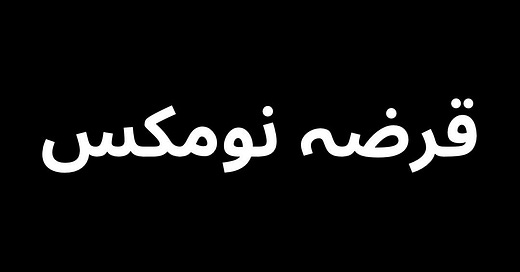Explaining Pakistan’s debt, and how we keep avoiding default
Sri Lanka, Ghana, Argentina, and Lebanon. All countries that have defaulted on their sovereign debt in the last five years, despite being significantly wealthier on a per capita basis than Pakistan.
This very year (FY 2024-25), we owe $25 billion in debt repayments while sitting on foreign reserves of only $11 billion, and yet we’ll still avoid default. In fact, Pakistan has never defaulted on its debt repayments in its 77-year history (aside from one time in 1998 when we were under sanctions for testing nuclear weapons—doesn’t count).
How do we keep getting away with it?
There’s three important factors that help make sense of Pakistan’s debt:
How much money we owe in total
How much money we owe in foreign currency
Who we owe the foreign currency to
How much money do we owe in total?
First, while we do owe a lot of people a lot of money, it isn’t actually an exorbitant amount in relative terms. One useful standard of comparison is looking at a country’s debt-to-GDP ratio. According to the World Bank, a developing country should aim to have a debt-to-GDP ratio below 64%, i.e., if your economy’s size is $100 billion, your total debt should not exceed $64 billion.
In that respect, Pakistan’s position looked pretty concerning in December 2023, as our debt-to-GDP ratio had crossed 75%. But while it was concerning, it was nowhere near the figures of Sri Lanka and Ghana—two countries that were forced to default recently as their debt-to-GDP ratio had exceeded 100%. In effect, they owed more money than the entire value of goods and services their economy would generate in a year.
Since then, the Government of Pakistan’s impressive fiscal restraint has meant that our debt-to-GDP ratio has declined to 67%. Not great, but not terrible either. The looming threat of default has been averted, and the big picture at least looks stable (unless we start doing dumb shit again).
How much money do we owe in foreign currency?
Not all debt is equal. Debt owed in foreign currency, such as US Dollars, is far more dangerous for Pakistan compared to debt owed in rupees. Because with PKR-denominated debt, if we’re really in a fix, we can just hold a gun to the State Bank’s head and force them to print a bunch more rupees to pay our creditors back. Not that we should do that, because that would have other disastrous consequences such as fuelling inflation and eroding the credibility of the central bank. But at least the option exists. When it comes to debt owed in USD though, no such magical solutions exist. You either have the dollars, or you don’t.
Source: Ministry of Finance/The News
In that respect, we’re not doing not too poorly. Only 34% of our debt is actually owed to external parties, while the majority of it is owed to domestic lenders in Pakistani rupees, namely our local banks. This does cause extreme distortions in the economy—in 2023-24, local banks lent a massive 7700 billion rupees to the government while the private sector received a measly 120 billion rupees in loans.
But for a government struggling to stay afloat, it is still reassuring that local citizens and institutions maintain trust in the Government of Pakistan’s ability to honour its T-bills, bonds, and savings schemes.
Who do we owe the foreign currency to?
This is the final part of the equation that trips up a lot of lower middle-income countries who are desperate to get financing from anywhere. For instance, Ghana and Sri Lanka issued expensive Eurobonds that required repayment to commercial lenders in foreign currency. When it came down to crunch time and they couldn’t source the dollars/euros, they were forced to default.
Pakistan’s situation is a little different. In a sense, our perennial indebtedness has actually worked in our favour. Most commercial creditors, such as international bond holders or foreign banks, are too cautious to lend to a country which is always teetering on the edge of default.
Source: IMF
Instead, our biggest foreign lenders are multilateral agencies such as the IMF, World Bank and the Asian Development Bank. That’s okay. Multilateral agencies lend at concessional rates (i.e., the interest rate they charge is below market rates), and they’re usually willing to extend their loans if we aren’t in a position to repay—that’s how we’re on our 24th IMF loan in 77 years.
Our next biggest foreign lender is China, which is a bit more problematic. On the one hand, their loans come with high interest rates and require repayment in USD, which is tricky for a country with limited foreign exchange reserves such as ours. On the other hand, China can’t let us collapse completely, as they need a relatively stable Pakistan to preserve their investments in the country and to exert pressure on China’s chief regional rival—India.
It’s a similar story with Saudi Arabia, which relies on our labour and military support, and also generally enjoys the deference and outright obedience we extend to them time and again.
Remember the $25 billion we owe this year? Thanks to China, Saudi Arabia and the UAE’s generosity, more than half of that amount has been rolled over to the following year, making our current debt repayments a lot more manageable. What about next year? Woh tab dekh lein gaye, insha’Allah.
For now, let’s enjoy a year with low inflation and a stable dollar/rupee exchange rate. Considering our permanent broke-ness, that’s not a bad place to be in.
What I’m reading this week:
Pakistan is losing its glaciers to climate change (Aina J. Khan, New Lines Magazine)
Coke and Pepsi took a hit from the BDS movement. Local brands bottled the opportunity (Abdullah Niazi, Profit)
Follow Karzanomics on Insta for weekly updates, and get the newsletter via WhatsApp





